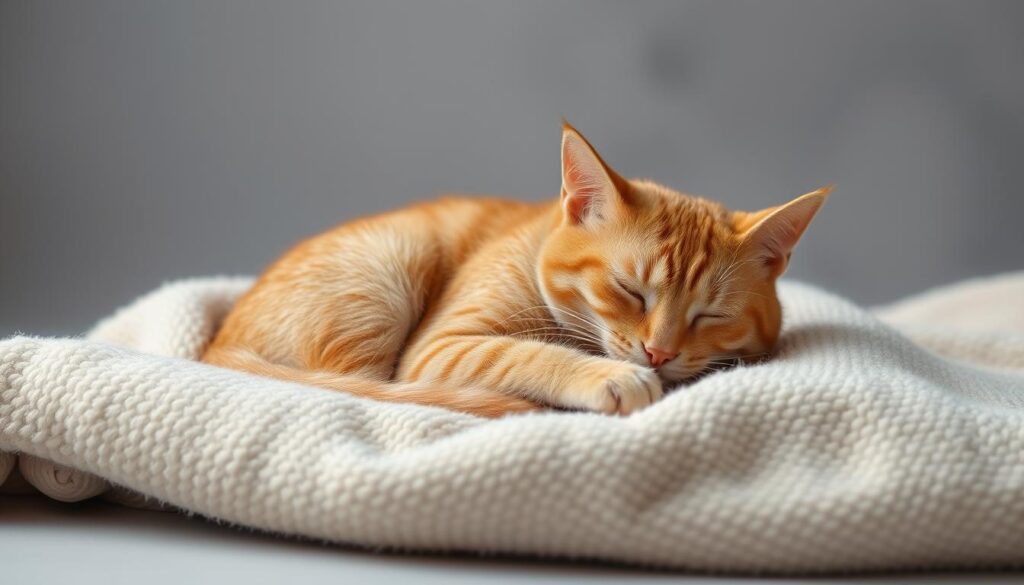Discover expert tips on understanding cat behavior, reading cat body language, and solving common cat behavior problems. Improve your cat’s happiness today!
Introduction
Cats are fascinating creatures with a rich variety of behaviors that often leave their owners puzzled. If you’ve ever wondered why your feline friend suddenly darts across the room, or what it means when they purr or flick their tail, you’re not alone. Understanding cat behavior is key to building a strong bond, improving communication, and ensuring your cat’s happiness and wellbeing.
In this comprehensive cat behavior guide, we’ll explore how to read your cat’s body language, decode their vocalizations, and learn practical cat communication tips. This article will help you answer “why cats act that way” and provide solutions to common cat behavior problems. Whether you’re a new cat owner or have had cats for years, this ultimate guide will deepen your understanding of your furry companion.

Interpreting cat actions helps you understand what your feline friend is trying to communicate. From a gentle tail flick to a sudden pounce, each movement reveals their mood or needs. By paying attention to their body language, vocal sounds, and behavior patterns, you can respond better to their feelings—whether they’re feeling playful, anxious, or seeking attention—making your bond stronger and your home happier.
1. Why Understanding Cat Behavior Matters
Cats communicate differently than dogs or humans. Their subtle cues can easily be misunderstood, leading to frustration or even behavioral issues. By learning to interpret your cat’s actions and signals, you can:
- Build trust and strengthen your relationship
- Identify signs of stress or illness early
- Prevent and manage behavioral problems
- Provide a safer and more stimulating environment
For example, a cat who suddenly hides may be fearful or sick. Recognizing this early can prompt timely veterinary care or environmental adjustments.
2. How to Read Cat Behavior: The Basics
2.1 Cat Body Language: The Silent Communicator
Cats rely heavily on body language. Here are some key signals:
| Behavior | Meaning |
|---|---|
| Tail upright | Friendly, confident |
| Tail twitching | Agitated or playful |
| Slow blinking | Trust and affection |
| Flattened ears | Fear or aggression |
| Purring | Contentment (sometimes pain relief) |
| Arched back | Fear or defensive aggression |
| Kneading (pawing) | Comfort and affection |
2.2 Reading Facial Expressions
- Eyes: Narrowed or slow blinking eyes indicate trust. Wide eyes can mean surprise or fear.
- Whiskers: Forward whiskers mean curiosity, while whiskers pulled back indicate fear or irritation.
- Ears: Pointed forward means alert; flattened ears show stress or aggression.
3. Common Cat Behaviors Explained
3.1 Playfulness and Hunting Instincts
Cats are natural hunters. Play behavior like stalking, pouncing, and chasing toys mimics hunting. Encouraging play helps channel their energy and prevents boredom.
3.2 Scratching Behavior
Scratching is essential for nail health and territory marking. Provide scratching posts to protect your furniture.
3.3 Sleeping Patterns
Cats sleep 12-16 hours a day due to their crepuscular (active dawn and dusk) nature.
4. Why Cats Act That Way: Understanding Motivations
Cats behave in certain ways based on instinct, environment, and health. Common reasons include:
- Seeking attention or affection
- Expressing fear or stress
- Marking territory
- Reacting to illness or pain
Real-world Example:
A cat suddenly urinating outside the litter box often signals stress or a urinary tract infection, both requiring prompt attention.
5. How to Interpret Cat Mood Signs
Recognizing mood signs can help you respond appropriately:
- Happy: Relaxed body, purring, slow blinking
- Anxious: Hiding, flattened ears, dilated pupils
- Angry: Hissing, growling, tail lashing
- Curious: Upright ears, focused gaze

6. Cat Communication Tips: Enhancing Your Connection
- Use slow blinking to show affection
- Speak softly to calm nervous cats
- Respect their space, especially when hiding
- Engage in interactive play daily
7. Managing Cat Behavior Problems
7.1 Aggression
Causes: Fear, territorial disputes, or pain.
Solutions: Identify triggers, provide safe spaces, and consult a vet if needed.
7.2 Litter Box Issues
Causes: Dirty box, stress, medical problems.
Solutions: Keep the litter box clean, provide multiple boxes, and check health.
7.3 Excessive Meowing
Causes: Attention-seeking, boredom, or medical issues.
Solutions: Increase playtime, provide mental stimulation, and rule out health problems.
8. Cat Behavior Training: Tips and Techniques
Training cats requires patience and positive reinforcement:
- Use treats to reward desired behavior
- Avoid punishment; it causes fear and mistrust
- Teach simple commands like “come” using clicker training
- Redirect unwanted behaviors with toys or distractions
9. Feline Behavior Explained: Insights from Experts
Veterinarians and animal behaviorists agree that understanding each cat’s unique personality is crucial. Some cats are naturally shy or independent, while others are more social. Tailoring your approach to your cat’s temperament leads to better outcomes.
10. Common Cat Behaviors You Should Know
- Head Butting: A sign of affection and marking you as “safe”
- Purring: Can indicate contentment or sometimes pain
- Licking: Grooming or bonding behavior
- Bringing “Gifts”: Hunting instinct, sharing prey with you
- Rubbing Against You: Marking territory with scent glands

Internal & Outbound Links Suggestions
- Link to trusted veterinary resources like ASPCA Cat Care
- Reference behavioral studies from International Cat Care
- Link to your website’s other cat care or training articles
FAQ Section
1. How Can I Tell If My Cat Is Happy?
Happy cats display relaxed body language, purr, knead, and exhibit slow blinking. They’ll approach you for affection and engage in play.
2. Why Does My Cat Scratch Furniture?
Scratching keeps claws healthy and marks territory. Provide appropriate scratching posts and redirect their behavior gently.
3. What Does It Mean When My Cat Hides?
Hiding can indicate stress, illness, or the need for solitude. Observe other signs and consult a vet if hiding persists.
4. How Do I Stop My Cat From Meowing Excessively?
Increase interactive play, ensure they have mental stimulation, and check for medical issues. Avoid reinforcing meowing by ignoring attention-seeking sounds.
5. Can Cats Understand Human Emotions?
Yes, cats can pick up on human emotions through tone of voice, body language, and routine changes, often responding with comforting behaviors.
Conclusion
Understanding cat behavior is essential for any cat owner looking to build a rewarding and loving relationship with their feline companion. By learning to read your cat’s body language, recognizing their mood signs, and addressing behavior problems with empathy and knowledge, you can ensure your cat lives a happy, healthy life.
Whether you’re decoding playful antics or managing more serious behavior issues, this guide offers practical insights grounded in expertise and experience.
If you found this guide helpful, please share your thoughts or questions in the comments below, and don’t forget to subscribe for more expert tips on cat care and behavior!



